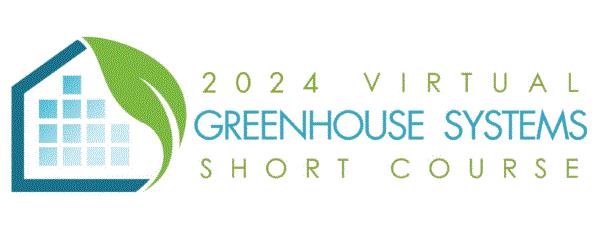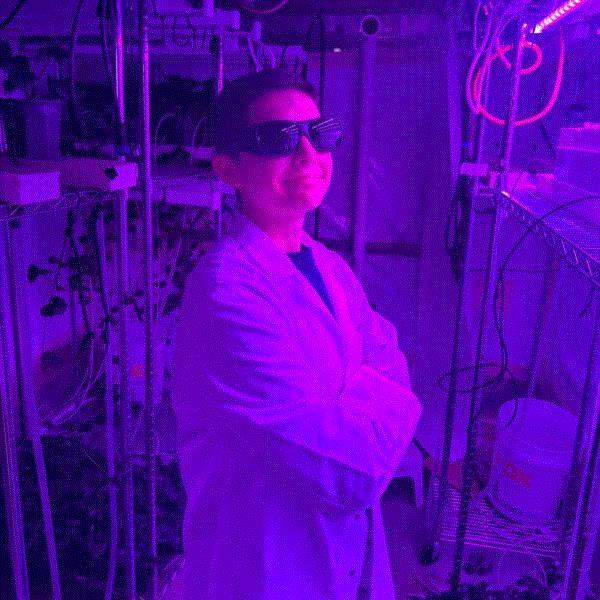About Me As Your New Editor
As I take over this newsletter as your new Editor-at-Large for Inside Grower, I just want to take a moment and thank Jen for all her service as your previous editor. This publication has long stood as a valuable source of information for all things CEA, and I hope to live up to her legacy moving forward.
In the next few weeks and months, I will be figuring out how to bring my personal touch to the articles, publications, news and other updates that I bring to this newsletter, and I encourage feedback about how they relate to you as readers!
Registration for 4th Edition of the Autonomous Greenhouse Challenge Extended to February 20
For anyone interested in this year’s
Autonomous Greenhouse Challenge hosted by
Wageningen University & Research, you are in luck as the organizers have extended the application window through February 20. Started in 2018, teams are challenged to use machine learning algorithms in combination with WU&R greenhouse and crop models to grow the year’s challenge crop virtually, with dwarf tomatoes identified as this year’s crop. Teams should consist of at least three members from backgrounds in tech, AI and horticulture, and at least one of the team members must be a student. Teams are encouraged to apply early as only five teams will advance past the first round of competition and spots are filling up fast!
Visit the official
webpage or see the associated
promotional video for information about the competition and how to register, and further information can be found by contacting the leading scientist, Dr. Silke Hemming of WU&R at
silke.hemming@wur.nl.

Virginia Tech Taking on Strawberry Yield and Application of Biofungicides in CEA
As we look back at this year’s hottest award season, the USDA Specialty Crop Block Grant announcements, let’s take a moment to recognize some winners from this year’s block of $72.9 million in 2023 SCBGP funding. While the Grammy’s and BAFTA’s will always have a place in our hearts, the selection of awards highlighted in this article are all about work proposed by Virginia Tech and the Virginia Cooperative Extension that shows great potential to the CEA field.
Increasing yield in greenhouse soilless strawberries using growth-promoting bacteria

Led by
Dr. B. Sajeewa Amaradasa of the Institute for Advanced Learning and Research, the project will seek to partner with extension, industry and growers to assess the effectiveness of bacterial endophytes on yields of different strawberry cultivars grown in CEA facilities. Living inside the plants, these bacterial endophytes have been shown to increase stress and disease tolerance and could be a significant advancement in increasing the viability of different CEA methods for growing strawberries. Given the interest in high-quality indoor grown berries generated by companies like
Oishii,
Bowery and
Plenty, this research could have significant implications on improving viability of the different approaches taken by these companies.
Applying next-generation biofungicides in controlled environment agriculture
Centered around specific objectives of evaluating biofungicides as a method for controlling grey mold and downy mildew in strawberry and spinach production respectively, assistant professor Kaylee South is proposing to develop and utilize beneficial microorganisms referred to as biofungicides as a form of disease control in CEA facilities. Disease pressure is a persistent problem being faced by anyone entering the CEA realm and will continue to be a concern as companies attempt to increase their efficiencies by reducing inputs and increasing yields beyond the normal thresholds attainable in field production.
Check out the U.S. Department of Agriculture’s (USDA) Agricultural Marketing Service (AMS) Specialty Crop Block Grant Program 2023
press releases for the full list of the projects awarded.

GLASE Consortium Announces 2024 Short Course
For readers hoping to learn more about supplemental lighting, coverings & curtains, light spectra and their combined effect on CEA crop production, the Greenhouse Lighting and Systems Engineering (GLASE) consortium will be hosting their virtual 2024 GLASE Short Course from April through May, with registration available now.

Covering six modules across six weeks, the course will be taught by a rockstar collection of industry, academic and grower experts as they cover topics from “Interactive Effects of Coverings & Curtains on Supplemental Lighting” to the “Impact of Spectral Treatments on CEA Crops”. Registration is currently available, and the modules will be available live and on-demand, so don’t miss your chance to attend!
Student Profile: Samson Humphrey, NCSU

As a former graduate student for more years that I would like to acknowledge, one goal I have as the new editor is to feature some of the amazing work being done by our students in CEA. The objective is to not only learn about their research, but also to get to know the student behind the work, so we encourage you to reach out to the student directly if you have any further questions. This week I sat down with Samson Humphrey of North Carolina State University to hear more about his research in CEA-based strawberry production! Visit the associated websites to learn more about the Strawberry Precise Indoor Propagation collaborative project and the NCSU CEA Coalition.
1. Before we begin, can you tell all your (soon to be) fans who you are? Bonus points for all the things that make you interesting outside of your work.
I’m a master’s student, a plant physiologist, a Floridian, and sometimes a cookie baker and stamp carver. I got started down the path of agriculture in high school FFA, and I’ve found my home in CEA where we use lots of sensors and growth chamber technology as tools to understand plant physiology. I also spend time working on astrobotany projects and co-hosting the podcast Plants, People, Science for the American Society for Horticultural Science (ASHS). Outside of 'work', I love antiquing historical pottery, carving stamps, and baking. Last fall I baked 18 cookie recipes, and this year I’m aiming to win my department’s cornbread competition.
2.Tell us a bit about your research.
My research goal is to figure out the most efficient way to propagate strawberry plants by manipulating environmental controls like CO2 concentration and light intensity. Conventional strawberry propagation in the field is expensive and challenging in many ways, and
my team believes that CEA or greenhouses might be a more sustainable alternative. We’ve successfully improved yields with increasing light intensity and CO2 concentration, and are working on studying light quality, light duration, and using targeted "intracanopy" lighting treatments to improve yield further. I got lucky—this is a really exciting physiology-focused project, with very tangible real-world impacts!
3. While most are familiar with the elevator pitch, I find that I get more mileage out of my cocktail pitch, aka how would you describe a simplified version of what you do to someone new at a cocktail party?
I usually tell people I’m a strawberry scientist, testing different treatments to understand how the plant is functioning and developing. I try to approach my answer in a way that gets them excited, because I think that's the most exciting part of plant science: trying to uncover the hidden factors that affect why plants function and develop the way they do. And the best part is that we can take advantage of these hidden factors to grow more food!
4. If you could recommend anything to a younger version of yourself, or any new student for that matter, what would it be?
I’d recommend keeping your mind open and trying things outside your comfort zone. Some of my favorite projects have been chemistry or engineering competitions, even though I’m a plant scientist and knew next to nothing about these subjects. It’s so rewarding to try new things and see that you’re capable of more than you thought you were. Challenge yourself!
5. What's next for you? How about if you could do anything in the world?
I’m so excited to start my PhD this fall doing research similar to what I do now, using plant physiology to produce more (or better) food. If I could do anything in the world, I think I’d still be doing this research ... but if I really wanted to mix things up, I’d be a sheep rancher, raising
critically endangered breeds and helping conserve their genetic line. I had endangered sheep throughout high school and college, and I miss them terribly.
6. Finally and for my own benefit, what’s your favorite outdoor activity? (In honor of my close friend Frank, "these hands were made for typing, not being outdoors" is also an acceptable answer.)
I’m not much of an outdoors person, but I absolutely love visiting farms and animal events. All kinds of farms will open their doors to you if you just ask! I’ve reached out and toured farms that raise miniature cart-pulling horses, tiny tropical aquarium fish, critically endangered chicken breeds, and more. Or you can go to animal events like reptile shows, dairy goat shows or (my personal favorite) rabbit shows. It’s like stepping into another world, full of people whose lives are totally different from my own. It’s wonderful, I highly recommend it.
Call for Nominations
Thank you to Sam for being my first profile subject! If you have any students that you would like to nominate for my next profile or if any students would like to put themselves forward, please reach out at
SCampbell@ballpublishing.com.




Stay curious, ask questions and let me know how it goes at scampbell@ballpublishing.com.

Dr. Sean Campbell
Editor-at-Large
Inside Grower
This email received by 30,629 loyal readers!
Interested in advertising in Inside Grower? Contact Paul Black or Kim Brown and they'll show you how easy, effective and affordable it is.